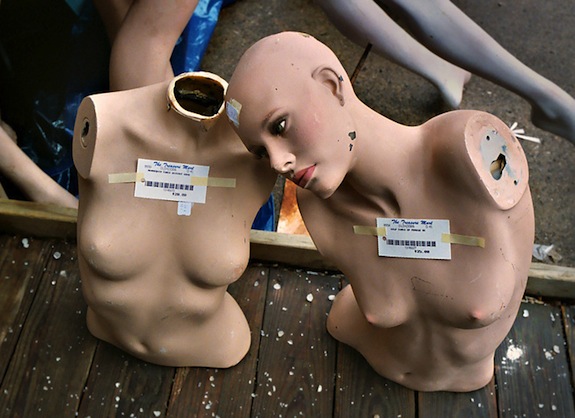This Woman Wants You to Buy Her, Piece by Piece
Filmmaker Storm Theunissen tired to find out just how much she could get for the various pieces of her

Image: Voxphoto
How much are you worth? The question could be taken two ways. Alive, you’re worth a certain amount – your salary, your value to society, your genetic potential. Dead, you’re worth a certain, different, amount – your organs, skin and bones. Do you want to know which version of you is worth more?
Filmmaker Storm Theunissen tired to find out just how much she could get for the various pieces of her. The segment, called What’s My Body Worth, aired on Monday. In it, Theunissen attempted to sell herself. Quite literally.
She started with selling her body as a whole, as a lap dancer. Then she moved to hair, blister fluid, cup of saliva, earwax. Each place quoted prices for these that rarely actually delivered. The best offer Theunissen could get was £30 for some blood. Her best rates came from on online auction website for those with fetishes who wanted bodily fluids. Donating for research, however, proved to be much harder. Theunissen writes:
It’s paradoxical that it’s possible to sell one’s body for a variety of “specialised” purposes, and yet it’s virtually impossible to do so for legitimate reasons, such as for medical research. Many in the pharmaceutical industry are hugely critical of the Human Tissue Act which governs what’s permissible to sell for medical purposes. They say it’s unfeasible for companies to recruit donors in Britain, and so they’re forced to import tissue from overseas, notably American biobank repositories.
For a woman, egg donation is an obvious money maker. In the United States you can make up to $15,000 if you’re the right match for the egg-seeker.
Theussin’s expedition was hindered a bit by the fact that she wanted to stay alive. Had she been willing to die for her cause, she could have made far more, she says:
In America, once a cadaver has been disarticulated into about 60 different tissues, the body parts are processed and made into medical products, which together are worth up to $250,000 on the open market. Some companies are listed on major stock exchanges – this is no niche market.
Had Theussin been game to get a little more dangerous, she could have joined the scored of people who make money by doing clinical trials – something called “lab ratting.” Of course, donating yourself to multiple clinical trials in a row isn’t exactly easy on your body. One professional lab rat says you’ll want to retire some day:
But, like all super-exciting things, there will come a time when you start to get sick of it. You’ll be tired of having to explain the needle marks in your arms by telling the TSA security guy that you’ve found Jesus and are taking it a day at a time. Maybe you’ll meet a girl who wants a boyfriend who’s actually there and whose job she can explain to her mom.
For Theussin, the experiment was partially about shortages for organs and tissues in the world. Those shortages happen for all sorts of reasons. Theussin came to this conclusion:
While it’s ridiculous that people who are willing to donate bodily fluids as harmless as urine and saliva for crucial medical cannot be paid, I did end up coming around to the old-fashioned idea that altruism must drive any decision to donate.
More at Smithsonian.com:
Organs Made to Order
/https://tf-cmsv2-smithsonianmag-media.s3.amazonaws.com/accounts/headshot/Rose-Eveleth-240.jpg)
/https://tf-cmsv2-smithsonianmag-media.s3.amazonaws.com/accounts/headshot/Rose-Eveleth-240.jpg)